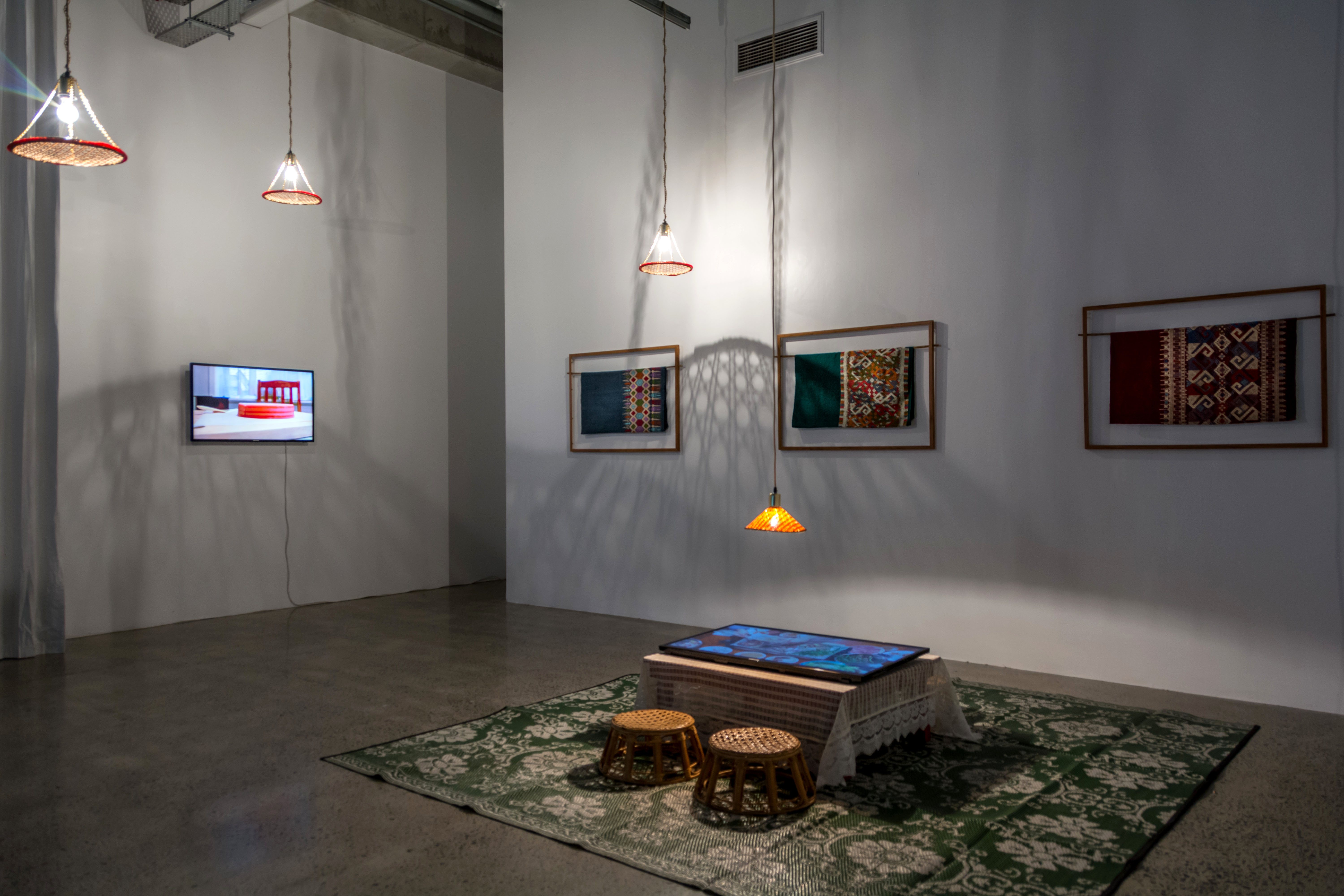

My practice explores the reconciliation of being culturally connected yet physically disconnected from Laos. The diasporic world I live in has generated a gateway that supports “…the process of ordering and bringing that archive to life,”[1] inspiring me to hold onto the love that bleeds out a sense of belonging. This sense of belonging guides my reconciliation with my ancestral roots. These experiences are imbued with intimacy, love and nostalgia. My video installation uses a kind of nostalgic lens to unlock a familiar yet unfamiliar family setting, which mimics the love that runs beneath my core beliefs and values. Through this nostalgic lens, I try to reconnect with my parents’ homeland. This process of reconnecting allows me to learn and value the beliefs of my ancestors while nurturing ideas of love and the sense of home which holds my sanity.
[1] Kiasma, “Kiasma - Korakrit Arunanondchai,” Accessed November 3, 2020, https://kiasma.fi/en/exhibitions/korakrit-arunanondchai/.
To be born and raised in a western society where my upbringing generally succumbs to western assimilation is bestowed with a cursed blessing. I am physically distanced from my ancestral homeland, waiting for special moments that allow me to connect to Laos. My artwork navigates this distance by focusing on acts and gestures of love. I document moments of domestic family life, particularly my Mother and her cooking. She enacts love in a way that is described beautifully in this passage “cutting fruit is like a gift. Life is filled with bitter and hard things but when you extract pits, piths, and peels, the fruit becomes an accessible and reliable source of pure sweetness, only softness”.[1] The act of cutting fruit does not require much but the art of practice. This simple gesture ferments into a loving memory, and I begin to learn and appreciate how “the willingness to swallow some bitterness so someone else enjoys only sweetness,”[2] emphasizes that it is love which bridges my disconnection to Laos.
My artworks are a testament to sacrifices that have been made and the ways that we care and come together as a family. This togetherness inspires me to breathe our language and chase the physical presence that shows a tender, selfless, and everlasting love of my culture and experiences. These encountered experiences form a sense of intimacy that connects me to memories of my homeland. Through these practices, values of love, care, and family are embodied. This idea of love ripples beneath my beliefs and values and flows into my artworks and nurtures the familiar yet unfamiliar setting that viewers are confronted with.
I am interested in how nostalgia “…is a process of ordering and bringing [archives] to life”[3]. I strive to accentuate the diasporic world I live in through a kind of nostalgic lens. My installation is an invitation to partake in a sentimental setting, where I practice and indulge in reconnecting with my ancestors. There is “a unique balance of strength and delicacy, of form and decoration... qualities that have come to define art”[4]. Although I am not physically connected, I am culturally connected to Laos through the practice of love and having a sense of home that my family leans on. From here and onwards, it’s the nurturing of my soul that comes to appreciate the values and beliefs of my ancestral land.
[1] Connie Wang, “Why Cut Fruit Is An Asian Language Of Love,” Refinery, November 2, 2020, https://www.refinery29.com/en-us/2020/05/9747262/asian-cut-fruit.
[2] Ibid.
[3] Kiasma, “Kiasma - Korakrit Arunanondchai,” Accessed November 3, 2020, https://kiasma.fi/en/exhibitions/korakrit-arunanondchai/.
[4] Robert E, Fisher, Buddhist Art and Architecture, (London: Thames and Hudson Ltd, 1993,) pg 155.


